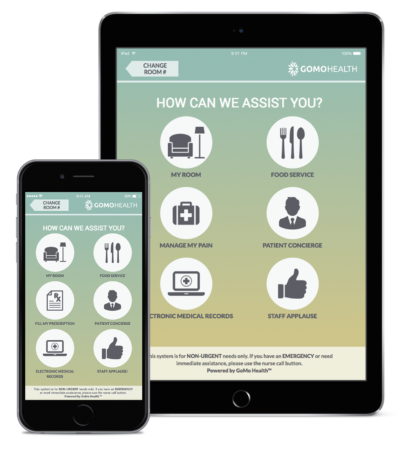7 Ways to Improve Patient Satisfaction Within Hospitals
For hospitals and health systems, patient experience is being pushed to the front of the priority list as a key pillar of the quadruple aim as it relates to determining reimbursements. Patient experience and satisfaction is a top priority for 70% of American Hospitals, according to the Healthcare Intelligence Network.
Of the 33 accountable care organization (ACO) quality measures outlined by the Centers for Medicare and Medicaid Services (CMS), seven are associated with patient experience. Additionally, patient experience is tied to key behavioral motivation factors for both patients and healthcare employees.
In general, sincere and consistent behavior is the best way to improve patient satisfaction. Consider daily themes focused on patient satisfaction to encourage the highest service delivery:
- Use the patient’s name. This is a simple but often overlooked detail that goes a long way to individualize the patient experience. Also, wearing a nametag makes it easy for patients to call you by your name.
- Make eye contact with the patient as often as possible. Giving cues to the patient that you actually care makes a big difference. Speaking to patients in a personalized way will show them that they are being taken care of.
- Spend time on patient education. One-on-one time spent with the patient at the hospital is often something that is rushed and leaves a person feeling confused and unsure. Spend a little more time to educate the patient, and give written documents for them to take home if possible. Written visit summaries, educational materials and instructions are all good documents that a patient can refer back to in order to settle any confused or uneasy feelings.
- Ensure cleanliness of the hospital. Cleanliness is an indicator of hospital quality and is an area that patients are asked to evaluate on HCAHPS surveys. And because one in 25 hospital patients have at least one healthcare-associated infection (HAI) per day, focusing on cleanliness can reduce the amount of HAI’s and improve overall patient outcomes.
- Improve hospital atmosphere. Hospitals are probably one of the least relaxing places to be. The noise, harsh lighting, sterile environment and quick paced movement don’t exactly encourage rest and relaxation. Hospitals are beginning to upgrade their décor to create a warmer environment and tackle the issue of noise pollution. According to a recent Huffington Post article, “Nighttime noise levels above 55 decibels can disturb sleep and even boost heart disease risk, so hospitals should be at 30 or below, the World Health Organization (WHO) says. Noise levels have been reported at more than 100 decibels at night in some facilities, the Mayo Clinic reported. Alarm fatigue has been known to impact patients and staff.” Hospitals can innovate to help patients relax, by developing quieter equipment, giving nurses wearable devices, and more.
- Determine if improved patient satisfaction requires upgraded systems. While smiles and polite behavior go a long way, sometimes an overhaul is required within internal systems. The current procedures for appointment scheduling, nurse call buttons, signage within the hospital, or other factors could be resulting in poor patient satisfaction. System improvement might require an overhaul of one or many logistical areas, but can be the main catalyst for improving patient satisfaction.
- Personalize the patient experience. Patients want to be comfortable during their hospital stay, and want their needs to be met. Giving them a personalized experience within your hospital can do just that. Concierge Care® is a suite of mobile engagement solutions that meets the patient at their fingertips. Bedside Concierge™ addresses the non-clinical, non-emergency needs of each patient with in-the-moment access to their own personal “Comfort Concierge.” Using a mobile device, tablet or laptop, patients can make real-time requests from a menu of “comfort” services – like room temperature adjustment, requesting a hot meal, pet therapy or a visit from clergy.
 The GoMo Health inpatient satisfaction solution, Bedside Concierge™, allows direct patients access to non-clinical services including:
The GoMo Health inpatient satisfaction solution, Bedside Concierge™, allows direct patients access to non-clinical services including:
- Electronic Medical Record (EMR)
- Prescription Fulfillment
- Patient Advocate
- Clergy
- Personal Care
- Valet
- Housekeeping
- Food Service
Pascack Valley Medical Center deployed Bedside Concierge to address the non-clinical, non-emergent needs of patients. To read more about their program and see the results of their bedside requests, click here.
Ready to learn more about how Bedside Concierge can work for your hospital or health system?
Your Content Goes Here






Find Us Online